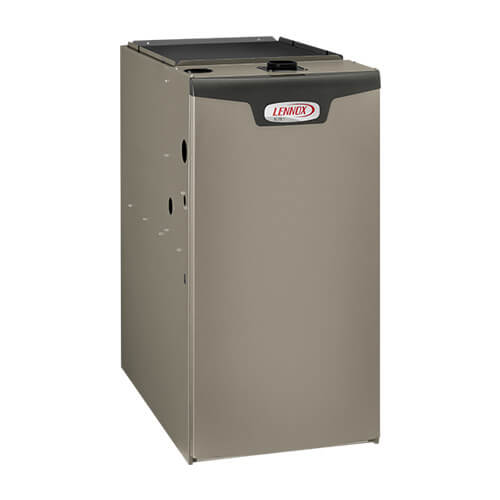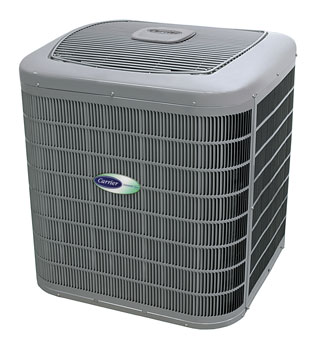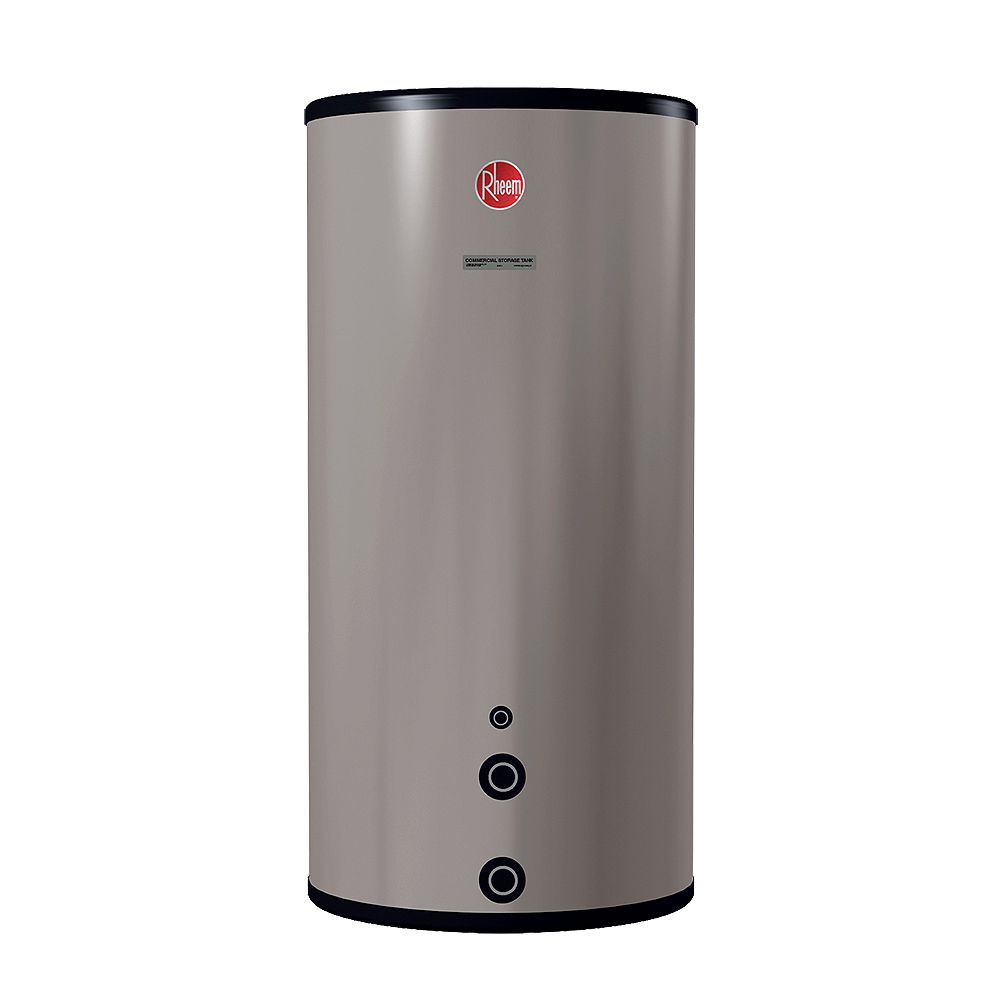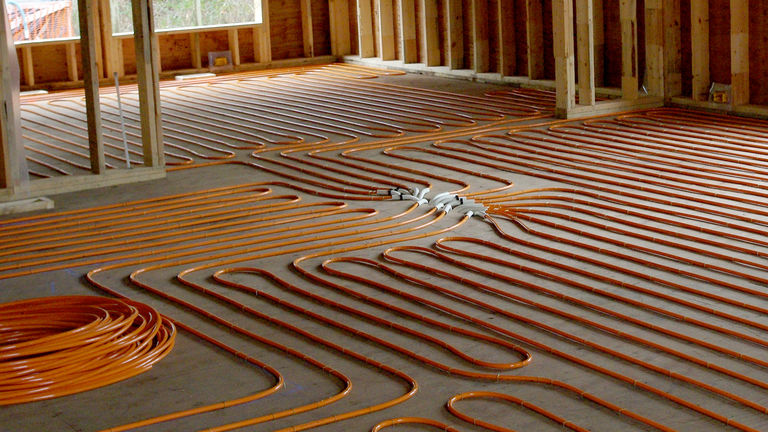Home heating systems have three basic components:
- a source of warmth
- a method of sending warmth throughout your home
- and a way to control the temperature
This article will provide a brief survey of today’s options for the first two components.
Gas Furnace
Natural gas furnaces are very common in Canada because they provide a safe, reliable and comfortable heating solution by sending warmed air through ductwork. In recent years, gas furnaces have become more efficient and are starting to connect with smart thermostats. Most new gas furnaces have efficiency ratings from 92-98% Annual Fuel Utilization Efficiency (AFUE).
Pros
- High fuel efficiency
- Low operating costs (gas is typically cheaper than oil or propane)
- Low installation cost
- Reliable and even heating
Cons
- Low risk of fire and explosion
- Low risk of carbon monoxide poisoning

Propane Furnace
Oil Furnace
Electric Furnace
Propane furnaces are a common choice for homeowners in rural areas. A propane tank is installed outside your home and connected to the furnace. As the propane is used up, the tank will need to be refilled by a local service company. Propane is readily available across Canada, including in remote areas.
Propane furnaces must meet a minimum efficiency standard of 92%, but most new propane furnaces have AFUE ratings of 92% to 98.5%.
Pros
- High fuel efficiency
- Medium operating costs
- Low installation cost
Cons
- Propane tank must be refilled regularly
If you live in a rural area where it is more difficult to get natural gas, you may want to consider an oil furnace. Heating oil is available in most parts of Canada but has decreased in popularity over the years due to concerns about operating costs, efficiency and emissions.
Pros
- Medium fuel efficiency
- Medium operating costs
- Medium installation cost
Cons
- Oil tank must be refilled regularly
Electric furnaces produce heat using electric heater elements controlled by circuit breakers. The operating costs are relatively high in most regions, which limits their popularity.
Electric furnaces do not contribute to carbon emissions from your home, and they are even greener when using clean, renewable electricity. No flue pipe or chimney is needed, making them easier to install than gas, propane, or oil furnaces.
Before buying an electric furnace, compare heat pumps or other electric options like baseboard heating.
Pros
- High fuel efficiency
- Low installation cost
- 20- to 30-year lifespan
- No flue pipe or chimney needed
Cons
- High operating costs
Air-Source Heat Pump Splits
An air-source heat pump split is a compact, refrigerant-based heating and cooling system. It has an outdoor unit and one or more indoor units. Splits were first popular in Asia and Europe and are now becoming more common in North America.
The outdoor unit looks like a slim version of an air conditioning unit. The indoor units are mounted on the ceiling, a wall, or near the floor like baseboard heaters.
Pros
- Very high fuel efficiency, clean energy
- Medium operating costs (less than gas, propane, oil, or electric)
- Ductwork not required
- Government incentives may be available
Cons
- High installation cost
- Older models have limited heating capability in cold climates
- Some models are unable to manage humidity
- Backup heat source is often required

Central Air-Source Heat Pump
Hybrid Heating Systems
Geothermal Heat Pump
Central air source heat pumps are similar to an air-source heat pump split, but they use ductwork instead. The outdoor unit is a condenser, and the indoor unit is an evaporator coil.
Pros
- Efficient, clean energy option
- Very high fuel efficiency
- Low operating costs
- Similar capacity and heat distribution as a furnace
Cons
- High installation costs
- Requires unique ductwork
- Backup heat source is often required
A hybrid heat system (or dual-fuel system) uses an air-source heat pump backed up by an auxiliary combustion furnace. When temperatures fall below a programmed level, the combustion furnace kicks in.
It’s estimated to save between 30 and 50 percent in energy costs over a year, with many hybrid systems paying for themselves within three to five years.
Pros
- Lower monthly energy bill
- Possible tax credits or rebates
Cons
- Installation costs more than other heating systems
Geothermal systems (also known as ground source heat pumps) are among the best in heating and cooling equipment. Geothermal heat pumps work by transferring heat between the ground and your home.
During cool seasons, the temperature underground is warmer than the air. Geothermal systems bring warmth from below ground up to your home using liquid.
Pros
- Clean energy option and very high fuel efficiency
- One of the lowest operating costs of any heating and cooling system
- Tends to last longer, with less ongoing maintenance, than other systems
- Ductwork not required
- Heating and cooling ability
Cons
- Most expensive heating system to install
- Installation requires specialized skills
- May require a large land area
- Not all soil types allow for installation

Boiler (Hydronic Heating)
A boiler heats a fluid such as water or glycol, which is then pumped into radiators or in-floor heating loops. Ductwork is not required, and this system is often found in older homes.
With a combi-unit, the boiler can also provide hot water for your kitchen, bathroom, and laundry room.
Pros
- High fuel efficiency and low operating costs
- Ductwork not required
- Underfloor tubing can be laid for heated floors
- Combi-unit options for home heating and water heater needs
- Low noise
Cons
- High installation cost
- Replacement parts can be expensive
- Can’t be used to cool your home
In-Floor Radiant Heating
Conventional heating systems heat the air, which then warms up people. Radiant heating creates warmth under the flooring and radiates it upward into the room, directly warming people and objects. The two main types of radiant heat are electric and hydronic (in-floor hot water heating).
Electric floor heating systems use electric heating elements woven in a serpentine pattern. Hot water in-floor heating systems use hot water pumped through plastic tubing, also laid out in a serpentine pattern.
Hot water is ideal for whole-house heating, but the installation costs are typically higher because it requires a boiler, a pump and gas lines. However, the cost of operation is generally lower when heating multiple rooms or the entire house.

Pros
- Uniform heating and non-allergenic
- Energy-efficient and no noise
- Easy to install
- No maintenance
Cons
- Existing flooring must be removed before new installations
- Slightly elevates the floor height
- Can be costly
Wood Heating
Commonly used in rural areas, this type of furnace burns cut firewood to provide heat through ductwork.
Heating with wood is hands-on and intensive. You’ll need a space outside your home to store firewood and space inside to accommodate a few days’ supply. Personally, you’ll need the physical strength and stamina required to split, move and stack firewood on a regular basis and time to devote to managing your fuel supply, tend fires and deal with maintenance tasks like hauling out ashes.
Pros
- Cheaper than oil, natural gas and electricity
- Sustainable source of fuel
- Today’s efficient wood stoves dramatically reduce woodsmoke emissions
Cons
- Very labour intensive
- Stove needs to be fed firewood daily
- Ashes need to be removed
- Stock of firewood needs to be managed seasonally
The House
Explore the different components of the house.

